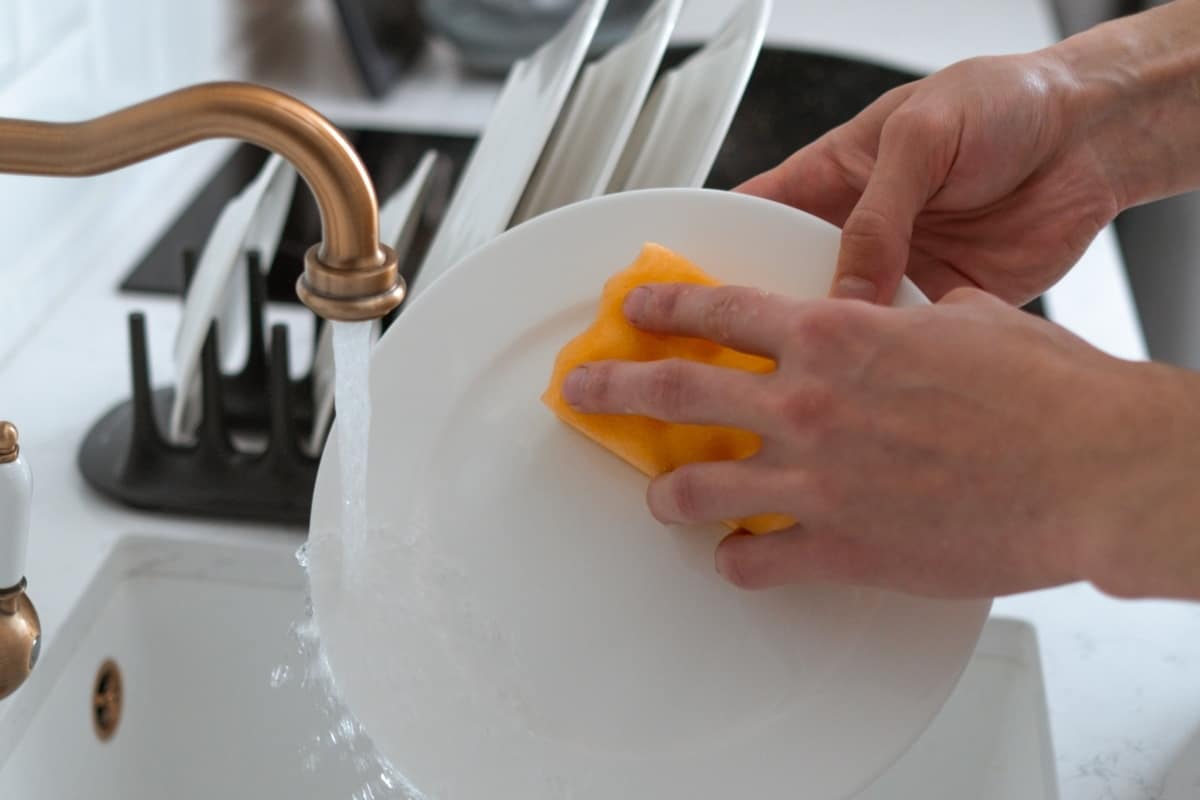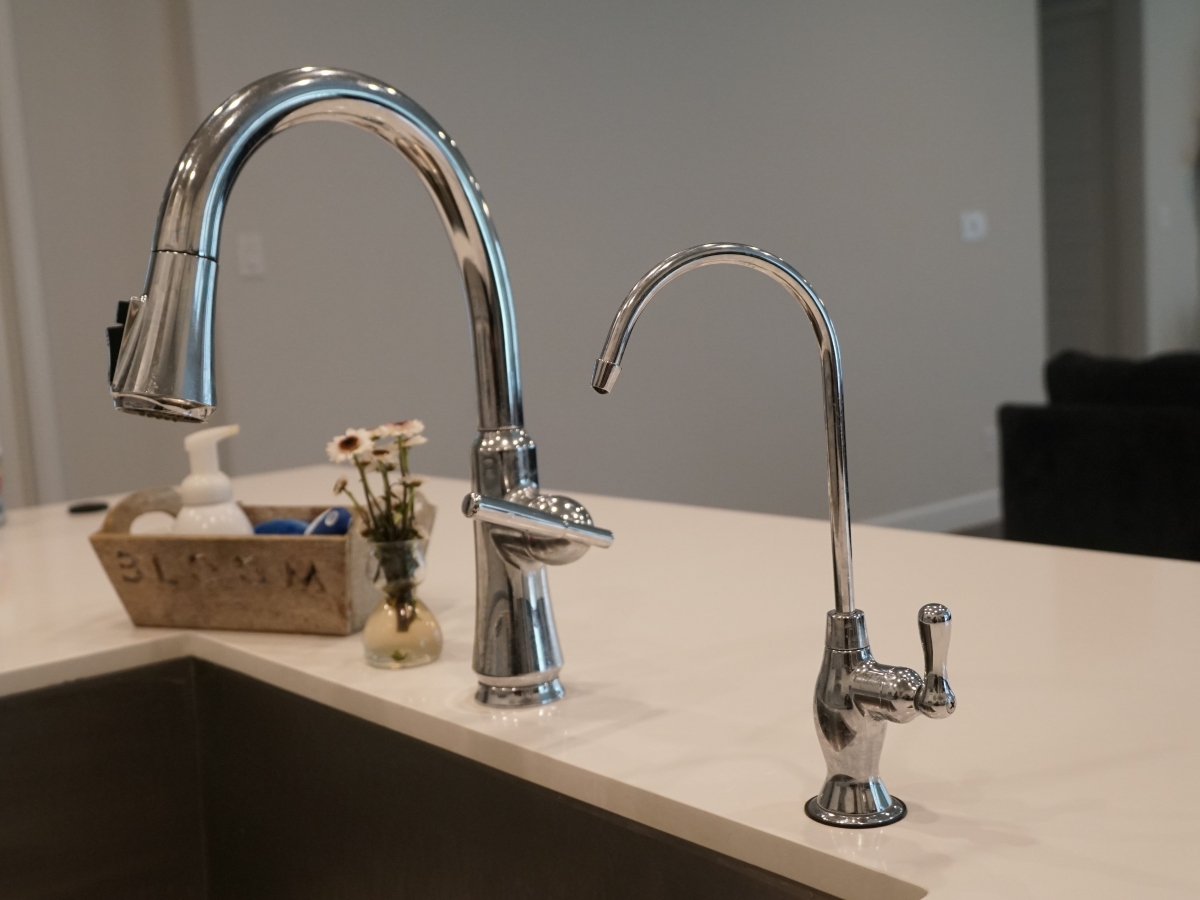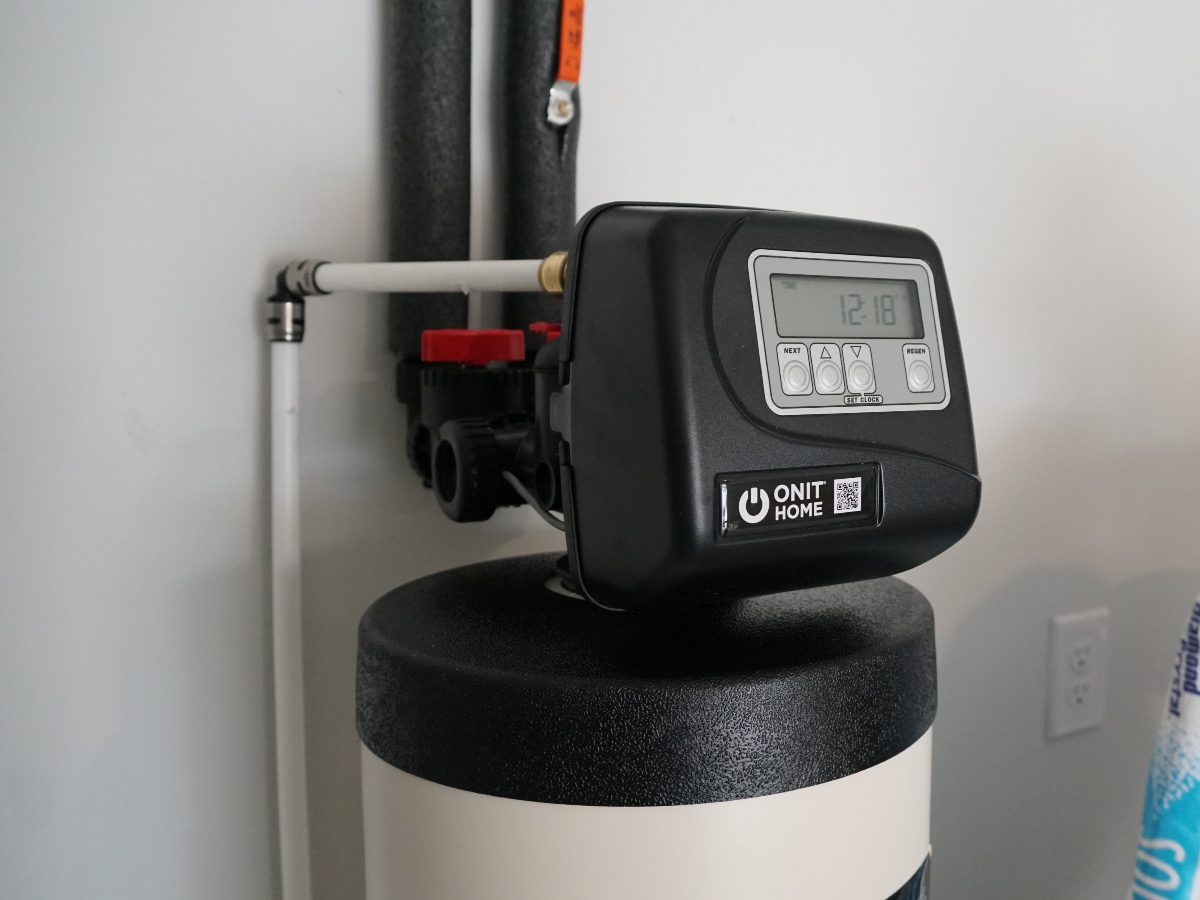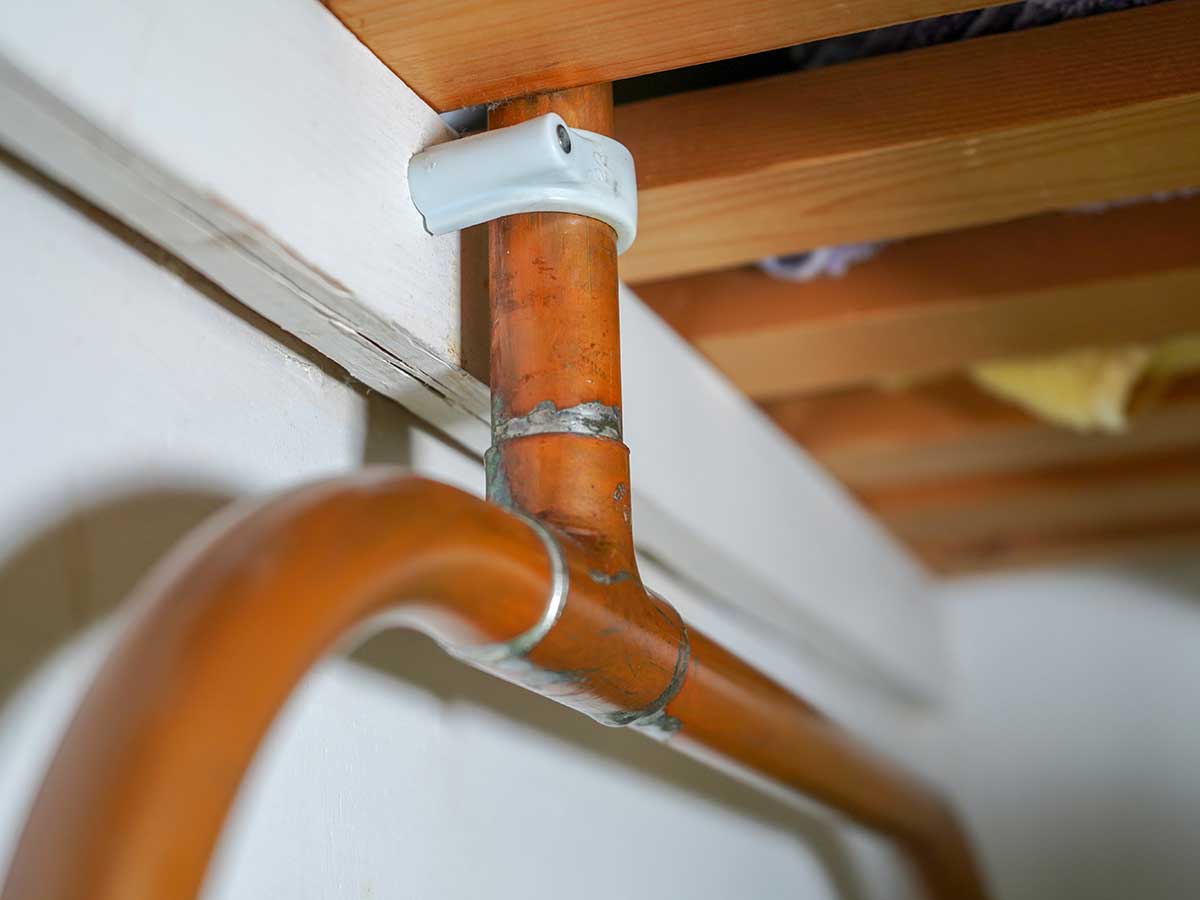Copper is a naturally occurring mineral in our environment. It exists in rocks and soil. Copper is found at low levels in natural water bodies. The metallic element is widely used in wiring, jewelry, electrical equipment, and plumbing systems.
It’s an essential trace element for your health since it supports several body functions, including the production of enzymes and other neurological functions. Nonetheless, exposure to high levels of copper in water can be toxic.
Like any other potential contaminant, copper can negatively impact your life when it’s in your water supply. According to the EPA, drinking water should not contain more than 1.3 mg of copper per liter. Therefore, you should consider testing your water if you notice it tastes like you’ve licked a penny, there’s corrosion in metal plumbing components, pinhole leaks in your plumbing, or green stains.
In this article, you’ll find out the different ways copper can get into your water, the signs you should look for, and how whole-home water filtration can provide a lasting solution to copper contamination.

How Copper Gets Into Your Water
As mentioned above, copper is naturally found in all water sources at low levels. However, water in your copper and brass pipe fittings and fixtures over long periods can cause corrosion. Consequently, copper finds its way into your drinking water. Furthermore, it can also get into your water from natural sources such as soil and rocks.
Copper can leach into your drinking water through the environment. Some soils are rich in copper and have deposited all through to your homes. It’s common in regions where there are wells. Also, some cities and urban areas have higher concentrations of copper, especially places surrounded by factories. When your water is acidic, that is, if it has a low pH level, it can corrode the pipes and plumbing fixtures and eventually cause copper contamination.
Copper can also get into your water through industrial processes, mining, and farming activities, especially when no proper waste management practices are in place.
Signs Your Water Has Copper Contamination
It’s not easy to notice the presence of copper in your water supply. But that’s because it doesn’t have taste, color, or smell at low levels. However, as its levels increase, you should look for the following signs:
Metallic Taste in Your Drinking Water
High levels of copper in water can affect how your water tastes. Water is tasteless by nature. Copper is present if your drinking water has a bitter, metallic taste. Such water is not safe for consumption, and it can cause health problems, including headaches, diarrhea, vomiting, nausea, kidney disease, stomach cramps, and damage to your liver.
Blue-Green Staining
You might have seen blue-green stains on your faucets, showers, sinks, and other fixtures. When you notice such staining, you’re likely dealing with copper in water.
Leaks in Your Plumbing
When you notice pinhole leaks in your pipes and plumbing, you may be dealing with corrosive water. These leaks result from pitted corrosion and allow water drips to seep out of your pipes.
Corrosion Of Your Pipes and Plumbing Components
Copper pipes are prone to corrosion. They usually change from a warm reddish brown color to green. When you notice that your pipes have a blue-green or green sheen, it means there’s corrosion in the water pipes. Chances are this green corrosion has found its way into your drinking water through the plumbing components. Therefore, using water that has gone through such pipes can harm your health, including damage to your hair and skin.

Can Pipes and Plumbing Fixtures Cause Water Contamination?
Copper is used in making most pipes and plumbing fixtures in your home. It has been a staple in the plumbing industry for decades. They are long-lasting(up to 50 years). However, copper pipes and fixtures can impact the quality of your water when compounds from within the pipes infiltrate the eater as it flows through them in a process known as leaching. That’s why silicon pipes are advisable in water piping systems. If the water is acidic, it can corrode the pipes and plumbing fixtures, causing a metallic taste of the water.
What Are The Effects Of Copper On Your Health?
Copper is an essential trace element that our body needs to maintain good health. Sources of copper include seeds and nuts, shellfish, wheat bran cereals, stone fruits, leafy vegetables, and grains. However, consumption of excessive levels of the component can negatively impact our health.
Research shows that adults should consume approximately 2 to 3 milligrams of copper daily. Consuming large amounts of copper is dangerous and can lead to:
- Diarrhea
- Vomiting
- Abdominal pain
- Jaundice – the whites of the eyes and skin turn yellow caused by high levels of bilirubin
Also, when you get in contact with large quantities of copper, your hair may turn a different color – that is, green. When you inhale copper dust and fumes, you may contract acute syndrome of metal fume fever that is characterized by:
- A metallic taste in your mouth
- Chills
- Chest pains
- Fever
- Cough
- Headache, and
- General body weakness
Moreover, long-term exposure to copper causes permanent scarring and lung inflammation, which can reduce lung function. Long-term exposure to copper may have the following symptoms:
- Kidney failure
- Fever
- Difficulties in speaking
- Jaundice
- Liver failure
- Muscle aches
- Nausea
- Coughing
- General weakness
- Pain
- Anemia
Although copper poisoning(copperiedus) is rare in a healthy individual, it can occur in those with pre-existing health conditions such as Wilson’s or Menke’s disease – genetic disorders that result in unusual copper absorption and metabolism. Generally, your body can protect you from copper poisoning by preventing excessive amounts of copper from permeating the bloodstream.

Whole Home Water Filtration Is The Solution To Copper Contamination in Water
A whole-home water filtration system eliminates up to 97% of copper in water. That is reverse osmosis, distillation, and ion exchange filtration processes. A whole home water filtration system treats water and ensures the water flowing from your faucet, showerhead, or any other appliances is clean and filtered. These point-of-entry filters allow only fresh water to flow into your taps, faucets, and appliances. These include:
Reverse Osmosis Filters
A reverse osmosis water filtration system is worthwhile when cleaning and purifying water. It eliminates up to 97% of copper in water and leaves you with pure and healthy water for consumption. The filtration system uses a membrane that allows water to pass through while blocking contaminants in your water.
Ion Exchange Filters
Besides removing hardness in your water, ion exchange filters also eliminate copper. It has a media system of charged beads that removes excessive copper in water. Ultimately, discharged water washes away the contaminants leaving you with clean and purified water. The system is useful for filtering water for your whole home.
Activated Carbon Filters
This is one of the best ways to eliminate copper in water in your home. The filter can be used in a single or multistage system to purify and clean water. Not only do activated carbon filters remove copper, but other contaminants such as phenol, and BPA, among many other pollutants. These filters usually come in pitcher form or a countertop filtration system.
The Role of Distillers and Acid Neutralizers
Distillation involves boiling the water that contains copper contaminants and allowing the vapor to condense into water. Water evaporates, leaving copper in the boiling chamber. This is the best solution if you have acidic water. That is water that has a pH level of less than seven. The neutralizer uses calcite, a calcium-rich mineral, to reduce acidity in water. It dissolves, neutralizing the water, and raises its pH level to zero, thus preventing the damage acidic water can cause.
Do I Need a Whole Home Filtration System?
You need a whole-home water filtration system for several reasons, including if:
- The water supply in your home has not only copper but also other contaminants that affect its quality.
- You’re on we’ll water or in an area that’s rich in copper minerals.
- You have acidic water in your home
- Your water shows signs of the presence of copper in the water.
- You have hard water
In other words, a whole home water filtration system can remove any contaminant in your water.
Get Rid Of Copper In Water With ONITs Whole Home Filtration System
Copper is essential for your body only when it’s in small amounts. However, excessive amounts of copper in water can be harmful. It can cause several health problems, or worse, it can lead to death. If you notice green staining, corrosion in metal plumbing fixtures, or metallic-tasting water, you should consider installing ONIT Home’s whole-home water filtration system. It can help you eliminate 97% of copper and other contaminants.
Our goal at ONIT Home is to ensure peace of mind by removing copper and other contaminants that can harm you and your family. If you need clean water, we’re ONIT! We can customize a water filtration system that meets your home’s needs on any budget. Call us at 1-833-433-0331 for more information.



